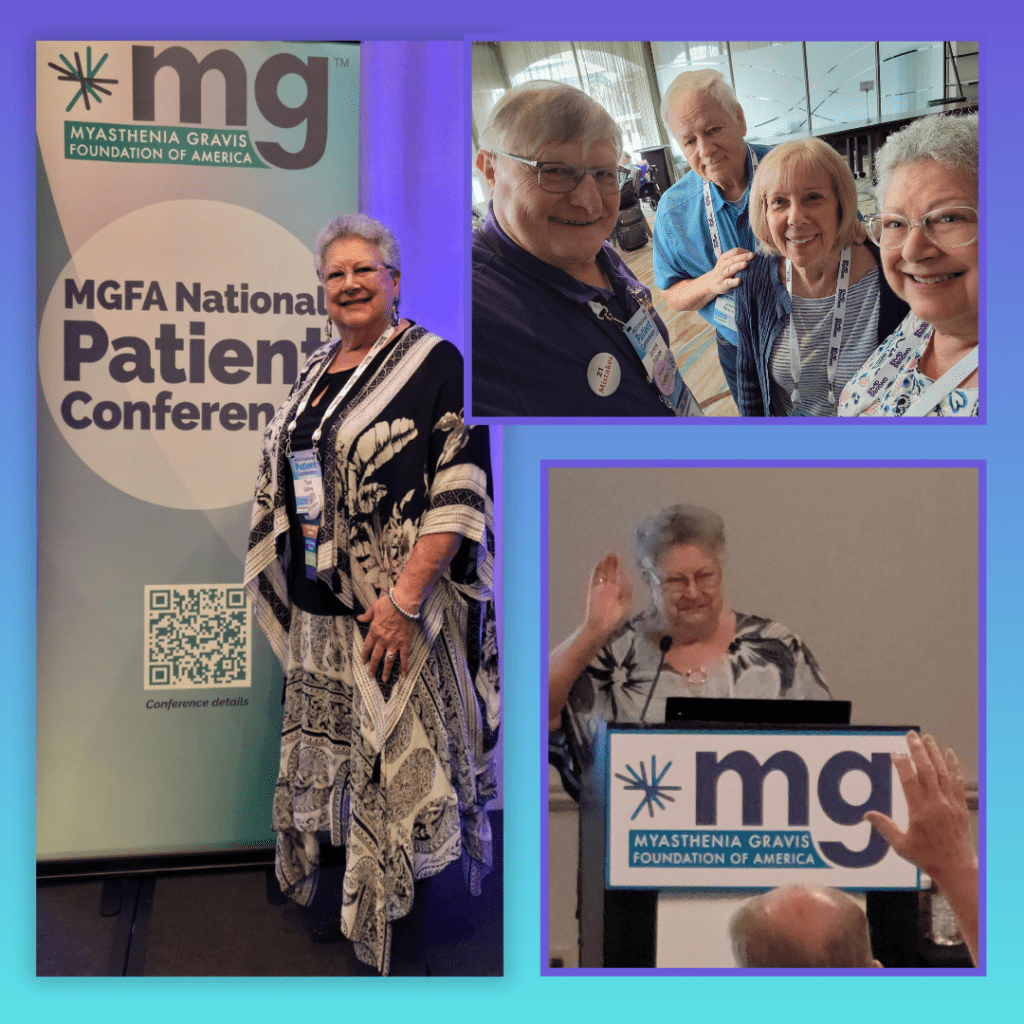June is Myasthenia Gravis Awareness Month
Myasthenia gravis is an autoimmune disease that causes extreme fatigue and profound muscle weakness. Anyone can be diagnosed with myasthenia gravis, though it’s more common in adults than in children, and it can occur regardless of race, gender, and age. In the United States alone, at least 70,000 people are thought to have this condition. Despite being classified as a rare disease affecting fewer than 200,000 Americans, it remains a significant health issue. Globally, for every 100,000 people, between 12 to 20 will be diagnosed with myasthenia gravis.
A neurologist or neuromuscular specialist usually diagnoses myasthenia gravis with a blood test or specialty tensile tests, though other diagnostic methods can also be employed. Importantly, myasthenia gravis is not contagious. The disease mechanism involves impulses from the brain traveling down nerves but being blocked by antibodies before reaching the muscles. Essentially, the body attacks itself, impeding muscle function.
Impact
Myasthenia gravis can severely impact a person’s ability to see, swallow, smile, walk, breathe, or engage in normal, everyday activities. Interestingly, symptoms often improve with rest and can fluctuate throughout the day, month by month, or year by year. Each patient’s symptoms can be quite different, which is why myasthenia gravis is sometimes called a “snowflake disease.” Drooping eyelids and double vision are common symptoms, but they are not the only ones; a person can have myasthenia gravis without these symptoms.
Ocular myasthenia is a type that impacts only the muscles of the eyes and eyelids, causing symptoms like drooping eyelids and double vision. As with most autoimmune diseases, the exact cause or trigger of myasthenia gravis is unknown. People with myasthenia need to rest to feel better—it doesn’t make them lazy! Their muscles simply can’t function like those of other people. Moreover, heat can exacerbate myasthenia gravis symptoms.
Symptoms and treatment
Because myasthenia gravis symptoms can wax and wane, some people are wrongly accused of faking their illness, which takes a toll on their mental health. Chronic illnesses like myasthenia gravis can impact mental health, increasing rates of depression and suicidal thoughts. While there is no cure for myasthenia gravis, there are treatments to manage symptoms, and in recent years, several new, FDA-approved treatments have been introduced.
Thymectomy, the removal of the thymus gland, has been shown to help some people with myasthenia gravis go into remission. Although some people achieve remission, for many, myasthenia gravis remains a chronic illness. The condition can be difficult to diagnose, and some people go years without receiving a correct diagnosis. Additionally, healthcare costs can be a significant barrier for patients with myasthenia gravis.
Despite these challenges, hope and optimism have been shown to improve disease outcomes for people with chronic illnesses like myasthenia gravis. People with myasthenia are often stronger than their weakest moments, supported by a strong network of patients online and in communities around the world. Having a rare disease doesn’t have to be a lonely journey—the MG Community is #MGStrong.
The Myasthenia Gravis Foundation of America is the largest leading patient advocacy organization solely dedicated to myasthenia gravis. It provides support and community for people with myasthenia gravis and their families.
My story
Living with myasthenia gravis has been challenging, but the support from the community and recent advancements in treatment have given me hope and strength to keep going.
As I was driving the short distance to Walmart one late Sunday afternoon in January, 2017, I was aghast as I noticed I was seeing double. I finished my errand and returned home. The next morning I was able to see my primary care physician. He ordered a blood test to confirm what he suspected might be ocular myasthenia gravis (Mg). On confirmation, I was referred to a neurologist and my journey began. The first year my double vision was remediated with Prednisone. When the drug was discontinued, the double vision returned, never to be resolved again to this day, despite gradually adding three other drugs to the mix. In addition, the Mg, progressed from ocular to generalized mg (gMg), which now causes weakness of the muscles in my upper body.
I have since learned how fortunate I was to have an accurate and speedy diagnosis. In addition, it was several years before I experienced the progression to gMg. My biggest challenge today is finding the drug or combination of drugs that will enhance my quality of life despite the gMg. In addition, in combination with other health issues, there are certain issues that require careful management, such as my upcoming spinal surgery. Progression of the disease is uncertain.
Volunteering with the Myasthenia Gravis Foundation of America has been incredibly helpful. I attend virtual support groups for patients and started the first national caregiver support group. I have attended two national patient conferences. The workshops and networking with patients and caregivers has proved to be an incredibly worthwhile experience.
Support resources
Wellness strategies
Awareness initiatives
Participate in awareness initiatives like MG Walks or fundraising events to support myasthenia gravis research and raise awareness.
Call to action
Join us in spreading awareness about myasthenia gravis by sharing this post, donating to my Facebook fundraiser, or getting involved in advocacy efforts. Together, we can make a difference. #MGStrong
For more information and to learn more about myasthenia gravis, visit www.myasthenia.org.
For more on caregiver self-care and other solutions for caregivers’ common mistakes, check out 21 Mistakes Caregivers Make & How to Avoid Them: Solutions and Strategies to Reduce Stress and Increase Happiness, available on Amazon! Are you looking for a dynamic speaker on caregiver empowerment? Go to my speaking page, and let’s connect!
Information in this post comes from the 30 Facts for 30 Days for MG Awareness Month. (Newsroom | MGFA. https://myasthenia.org/About-Us/News-Room)
The advice offered is for general information only; please consult your healthcare team, legal, or financial advisors for guidance.


